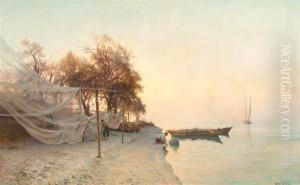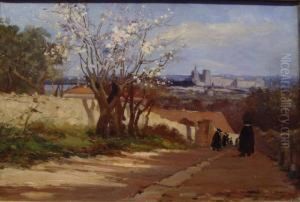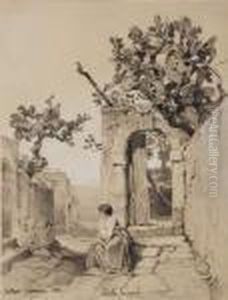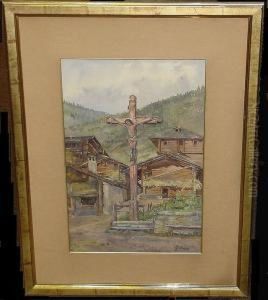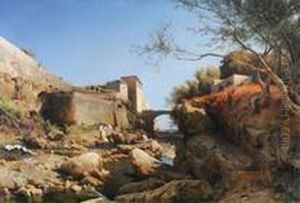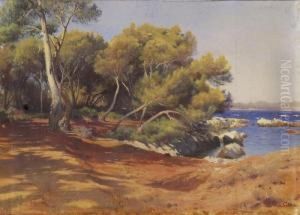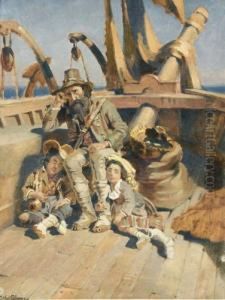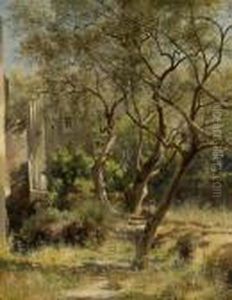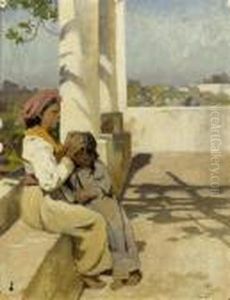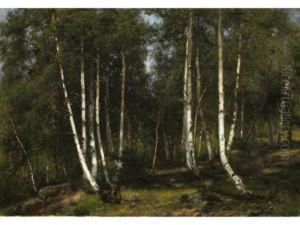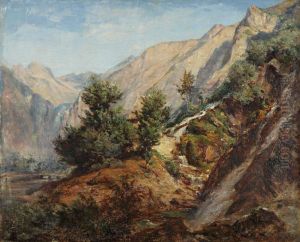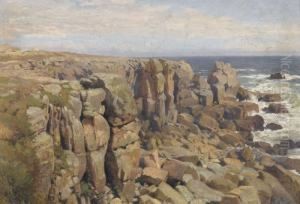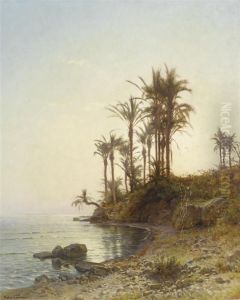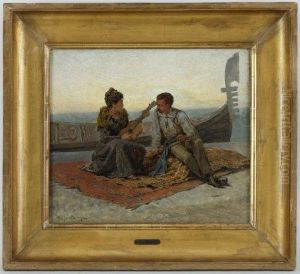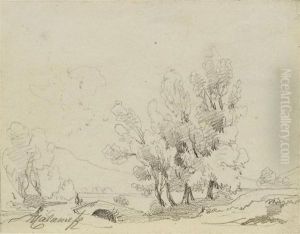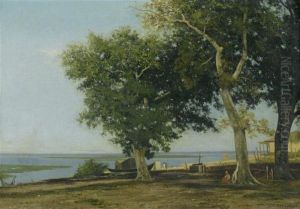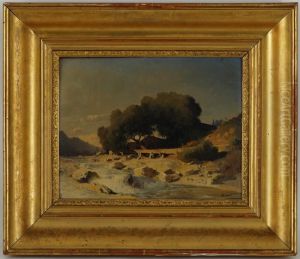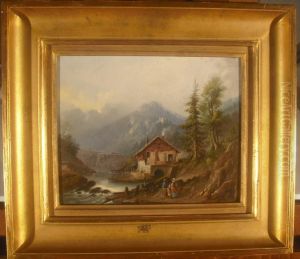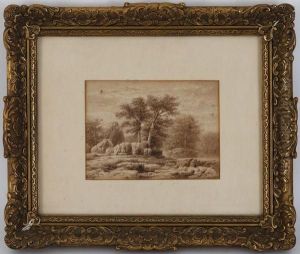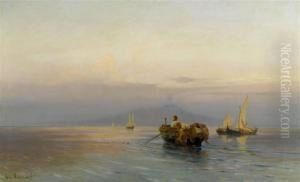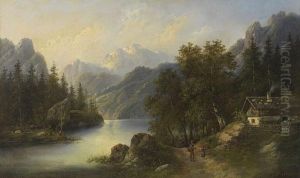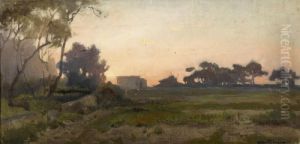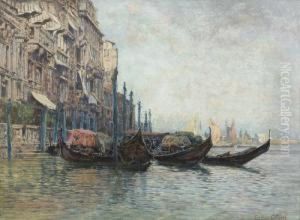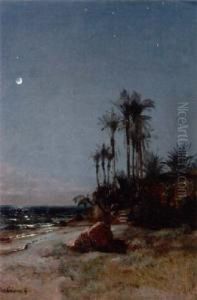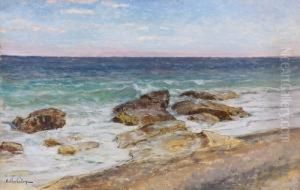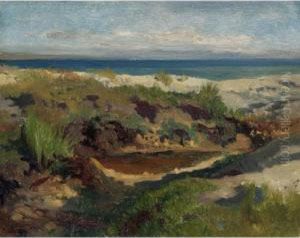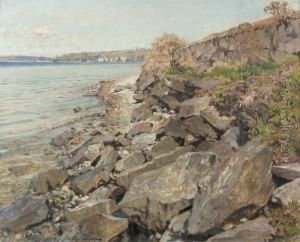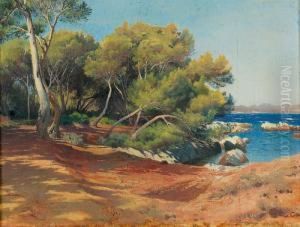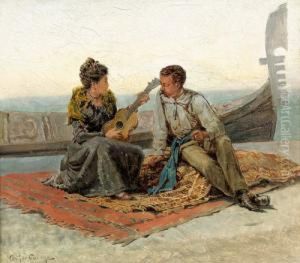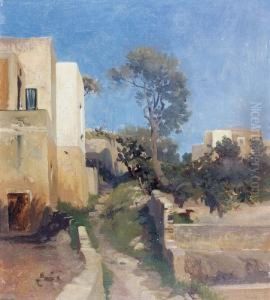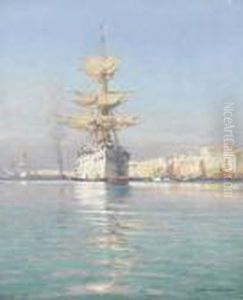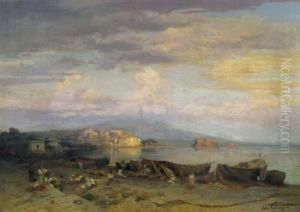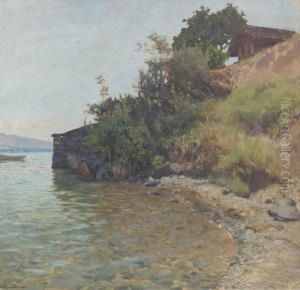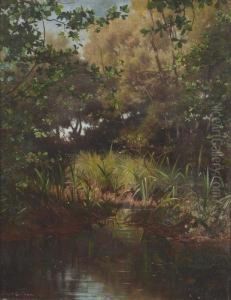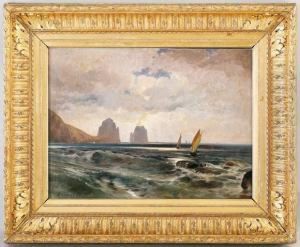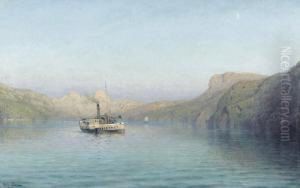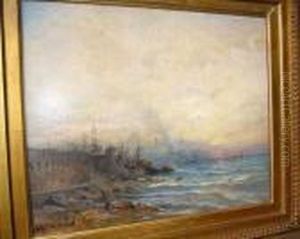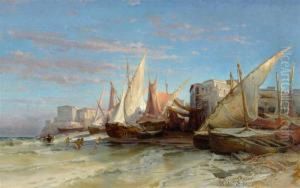Arthur Jean Bapt. Calame Paintings
Alexandre Calame was a Swiss painter born on May 28, 1810, in Arabie at the time part of the municipality of Corsier-sur-Vevey, today Vevey. He came from a humble background, and his father was a blacksmith. Calame's early life was marked by hardship, including the death of his mother when he was just eight years old. Despite these challenges, he developed a profound love for art, particularly landscape painting.
Calame's artistic education began under the tutelage of François Diday, who recognized his talent and mentored him in landscape painting. By the 1830s, Calame had established himself as a renowned landscape artist, with a particular focus on the Swiss Alps. His work was characterized by its dramatic representation of nature, meticulous attention to detail, and the romantic sensibilities prevalent in the art of that time.
In 1835, Calame opened his own studio in Geneva where he taught numerous students. He also published a set of lithographs that helped to cement his reputation as a master of the Alpine landscape. His paintings often featured sublime and majestic mountain scenery, which resonated with the growing appreciation for the natural world among European audiences.
Calame's success allowed him to travel extensively in Switzerland, where he sketched and painted the Swiss landscape en plein air, a relatively innovative approach at that time. He also visited France and Italy, but his heart remained with the Swiss mountains, which continued to inspire his work.
Throughout his career, Calame exhibited his work in various salons and received numerous accolades. He became one of the most celebrated Swiss artists of the 19th century and contributed significantly to the popularity of Alpine scenery in art.
Alexandre Calame passed away on March 17, 1864, in Menton, France. His legacy endures through his evocative landscapes that capture the grandeur and beauty of nature. His works are held in numerous collections and museums, reflecting his lasting impact on the field of landscape painting.
